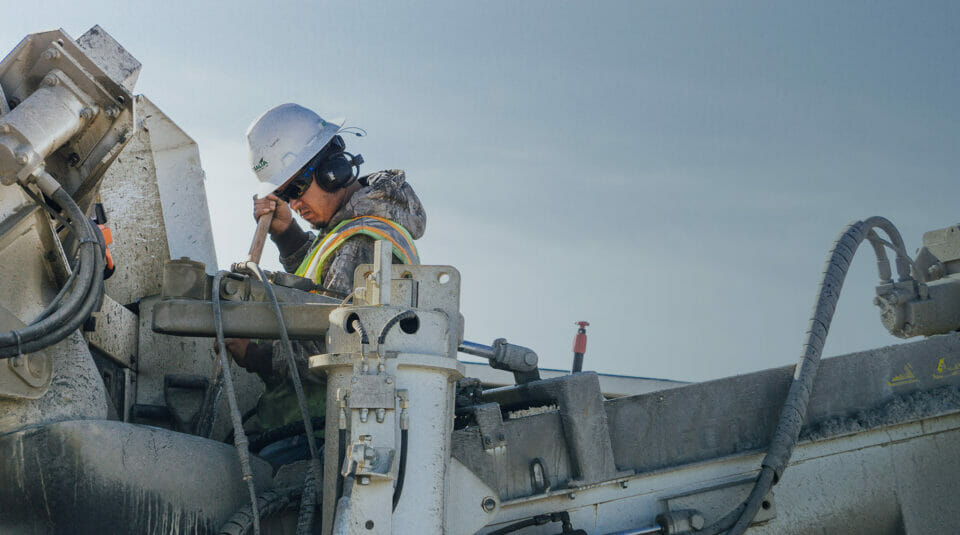
Holiday Bonus Episode: Safety Tips You Need This Season | Risk Matrix Episode 122
THE RISK MATRIX Cutting-edge podcast on occupational safety and risk management. Hosted by industry titans: JAMES JUNKIN, MS, CSP, MSP,…
A growing gap in the global workforce created by mass migration to white collar jobs together with the rise of renewable energy usher in the Fourth Industrial Revolution.

A walk through the Permian Basin of West Texas paints an accurate picture of the 21st century skilled workforce: a group of 50-something Caucasian men. Working on oil rigs for three decades, they’ve perfected the drilling and extracting of oil and hoisting and operating of equipment that are critical to U.S. production. There’s a good chance their fathers, uncles and cousins hold the same type of job alongside them.
But their sons and daughters don’t.
The next generation moved away from learning skilled work in droves, as social pressure gave way to the promise of a four-year college degree and white collar jobs in big cities. Add to that the volatile economic environment of 2008 and 2014-2015, which resulted in feast or famine cycles for the trades, forcing many to exit the skilled workforce in favor of a more stable life.
Now, our 50-something skilled tradesmen are coming up on retirement. They’ve put in their time. They’ve done the hard work. The baby boomers are ready for the next chapter.
Only no new blood has come to take their place, and we can no longer ignore the significant gap this has created in the oil and gas labor pool, which will balloon into a 440,000 worker deficit by 2025, according to a report by Accenture.
Oil and gas aren’t the only industries where workers have run dry. Manufacturing, construction, telecom, and other blue-collar industries face similar experiences. In fact, estimates suggest that for every skilled person entering the workforce, there are five who retire.
When today’s skilled workforce learned their trade, they did so on-the-job, by watching their predecessor. Paired with an experienced oil rigger, roustabouts or derrickhands in his 30s (the prime of his skilled career), workers learned the ropes and literally the tricks of the trade through the eyes of an expert standing a foot away.
The gap between those who have the knowledge today and those who need the knowledge has never been greater.
Even when new workers do surface, our skilled veterans will be asked to teach 21-year-old newbies how to do something they’ve never done or possibly even heard of. The chasm is generational — and oftentimes cultural as well.
Tribal knowledge once linking previous generations of field workers will likely need to be relegated to formal classroom training programs. The question is: Can it be adequately captured and distributed effectively?
New and projected renewable energy demands will require the same influx of skilled workers. The International Renewable Energy Agency estimates an additional 5.5 million transition-related renewable energy jobs will be needed as soon as 2023, nearly 30 million by 2030 and 42 million by 2050.
With renewable energy, the challenge is twofold. For one, building a new industry that didn’t exist even 15 years ago means developing novel technologies, industry infrastructure and robust businesses. It also means creating new technical rules and training or upskilling an entire new set of workers — without any previous tribal knowledge.
There’s no doubt workers will migrate from older skilled industries to renewables, attracted by the promise of high-tech, sustainable and cutting edge work that may be more profitable, and will most certainly carry more prestige. And yet workers will still need site and task-specific training. The fact that they’re skilled in pipeline repair or oil extraction won’t matter much.
While the dangers of the oil and gas rig work and manufacturing jobs are understood, the world of renewables is still vastly unknown. Mass production and distribution across the globe will require a web of safety regulations and organizational infrastructure to ramp up quickly, the type of infrastructure that took us 70 years to build for other sectors.
The COVID-19 pandemic has only increased the need for skilled labor across industries. Supply chain constraints have taken hold as borders continue to expand and contract, jacking up the cost of goods. The demand for skilled workers, like contractors, in home and commercial office renovations, for example, is increasing the demand and cost to consumers already.
Together, these forces have created the perfect storm — The Fourth Industrial Revolution.
The world’s skilled labor force is a dying breed. We must bring it back in order to innovate and drive much needed future change.
Let’s work together as the Fourth Industrial Revolution takes hold to identify a new crop of skilled workers. Let’s build strong skilled industries that are exciting to partake in as a career, and not just wayward, temporary jobs.


THE RISK MATRIX Cutting-edge podcast on occupational safety and risk management. Hosted by industry titans: JAMES JUNKIN, MS, CSP, MSP,…

THE RISK MATRIX Cutting-edge podcast on occupational safety and risk management. Hosted by industry titans: JAMES JUNKIN, MS, CSP, MSP,…
We’ll send you practical and insightful supply chain risk management info that can benefit your business. Plus, important company updates that keep you in the loop.
